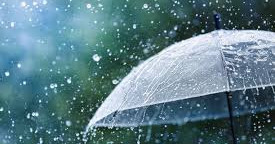
Flushing Smarter: How Using Rainwater in Toilets Can Save Water and Money
In today's world, the importance of conserving water has become increasingly apparent. With resources becoming scarcer and the effects of climate change becoming more pronounced, it's essential that we find ways to reduce our water usage. One often overlooked way to do this is by utilising rainwater for flushing toilets. This simple change can not only help save water, but also save you money in the long run. Here's why:
What is Rainwater Harvesting?
Rainwater harvesting is the process of collecting and storing rainwater for later use. This can be done through various methods, such as using rain barrels or installing a rainwater harvesting system. The collected rainwater can then be used for a variety of purposes, including flushing toilets. For a broader overview of sustainable water solutions, see Water Efficiency in the UK: A Sustainable Future for Homes and Buildings
How Does Using Rainwater for Toilets Save Water and Money?
Flushing toilets accounts for a significant portion of household water usage. In fact, on average, toilets account for 24% of a household's total water usage. By using rainwater for flushing, you can drastically reduce this number and save a significant amount of water. This not only benefits the environment, but also your wallet. With less water being used, your water bill will decrease as well. You can also explore potential household savings using our water calculator.
Benefits of Rainwater for Flushing Toilets
Aside from the obvious water and cost savings, there are other benefits to using rainwater for flushing toilets:
- Reduces strain on municipal water systems: By using rainwater for non-potable purposes such as flushing toilets, we can reduce the strain on our municipal water systems. This can help prevent water shortages and ensure a more sustainable water supply for future generations.
- Reduces energy usage: The process of treating and distributing water to homes requires a significant amount of energy. By using rainwater for flushing toilets, we can reduce the demand for this energy and help reduce our carbon footprint.
- Improves water quality: Rainwater is naturally soft and free of chemicals, making it a better option for flushing toilets. This can also help extend the lifespan of your plumbing system and reduce maintenance costs.
How to Implement Rainwater Harvesting for Flushing Toilets
Implementing rainwater harvesting for flushing toilets can be done in a few simple steps:
- Install a rainwater harvesting system: This can be done by hiring a professional or purchasing a DIY kit.
- Connect the rainwater harvesting system to your toilet's plumbing: This can be done by connecting the system to your toilet's flush valve or by installing a separate system specifically for flushing.
- Use a filtration system: It's important to ensure that the rainwater being used for flushing toilets is free of debris and contaminants. Installing a filtration system can help with this.
- Monitor and maintain the system: Regularly check for leaks, clean filters, and make any necessary repairs to ensure the system is functioning properly.
Conclusion
In conclusion, utilising rainwater for flushing toilets can have numerous benefits for both the environment and your wallet. With a little bit of effort and investment, you can make a significant impact on water conservation and cost savings. So next time it rains, consider using that water to flush your toilets and start flushing smarter!
Recent Posts
- Soakaways and Water Efficiency: Protecting Your Home While Saving Water
- Flushing Smarter: How Using Rainwater in Toilets Can Save Water and Money
- Flow Reducers – The Smart Way to Save Water and Energy at Home
- Harnessing Smart Home Technology for Enhanced Water Efficiency
- The Future of Water Efficiency: How Technology is Transforming Water Conservation
- EasyWaterCalc: The Fastest Way to Get Your Water Efficiency Certificate
- The Economic Benefits of Water Efficiency for Homeowners and Developers
- Innovations in Water-Saving Technologies for Modern Homes
- Water Efficiency Guide
- Building Water Sustainability: A Blueprint for the Future
